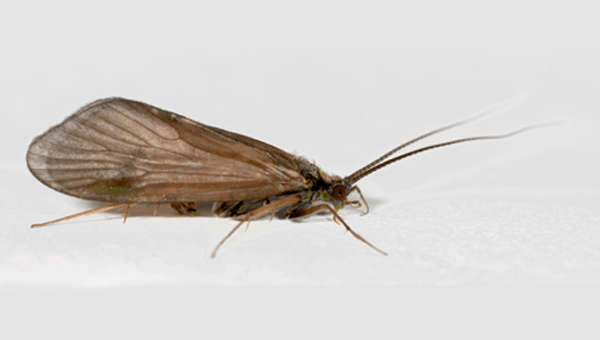Description and analyses of the global diversity of caddisflies

Arctopsyche ladogensis, male. Photo: Kjell Arne Johanson
Summary
Caddisflies constitute an order of holometabolous insects and form the sister group to butterflies and moths. The larvae are aquatic and most species build protective cases of stone particles or plant pieces glued together by silk produced by glands situated behind the mouthparts. The order is divided into fifty-two families and 620 genera and comprises about 15000 described species. In Sweden we have 223 species recorded, and the number of species increases towards the tropics. Particular rich are tropical areas of southeastern Asia and South America.
My research aims at describing the diversity of caddisflies, which includes sampling of research material from various parts of the world. This material is analyzed at the Swedish Museum of Natural History and most of it is deposited here for present and future research.
I presently focus on two geographical areas, namely southeastern Asia and Africa. This covers sampling from as many different areas in Vietnam as possible for describing the diversity in the country as well as obtaining material for large-scale phylogenetic analyses of families and genera that includes the rest of the world. The focus on African is primarily to build up a knowledge on the diversity of Africa south of Sahara (Afrotropical region) to be published in a catalog, as well as describe species from Madagascar. The latest initiative is to start a collaboration between the Swedish Museum of Natural History and counterparts in Rwanda.
In order to secure a large representativeness for the evolutionary and biogeographical analyses material is needed from different part of the world. As a part of this research fieldwork in various parts of the world is necessary, including countries as Tanzania (1990), Marocco (1988), Greece (2000), Canary Islands (1994), Costa Rica (1994), Scandinavia (continously), USA (1995, 2015), Svalbard (1987), New Caledonia (2001, 2003-2004, 2006), New Zealand (2005), Corsica (2005), Chile (2005/2006), Turkey (2008), Peru (2009), Vietnam (2011, 2012, 2013, 2016) and Bolivia (2013).
Projekt Participants at NRM
Kjell Arne Johanson (principal investigator)
Tobias Malm (assistant)
Rasa Bukontaite (assistant)
External Projekt Participants
Marianne Espeland (Curator), Zoological Research Museum Alexander Koenig, Germany
Janos Oláh (professor), Centre of Environmental Health, Debrecen, Hungary
Alice Wells (researcher), CSIRO, Australia
Simon Rukera Tabaro (lecurar), University of Rwanda, Rwanda
Leonce Ngirinshuti (master student), University of Rwanda, Rwanda


